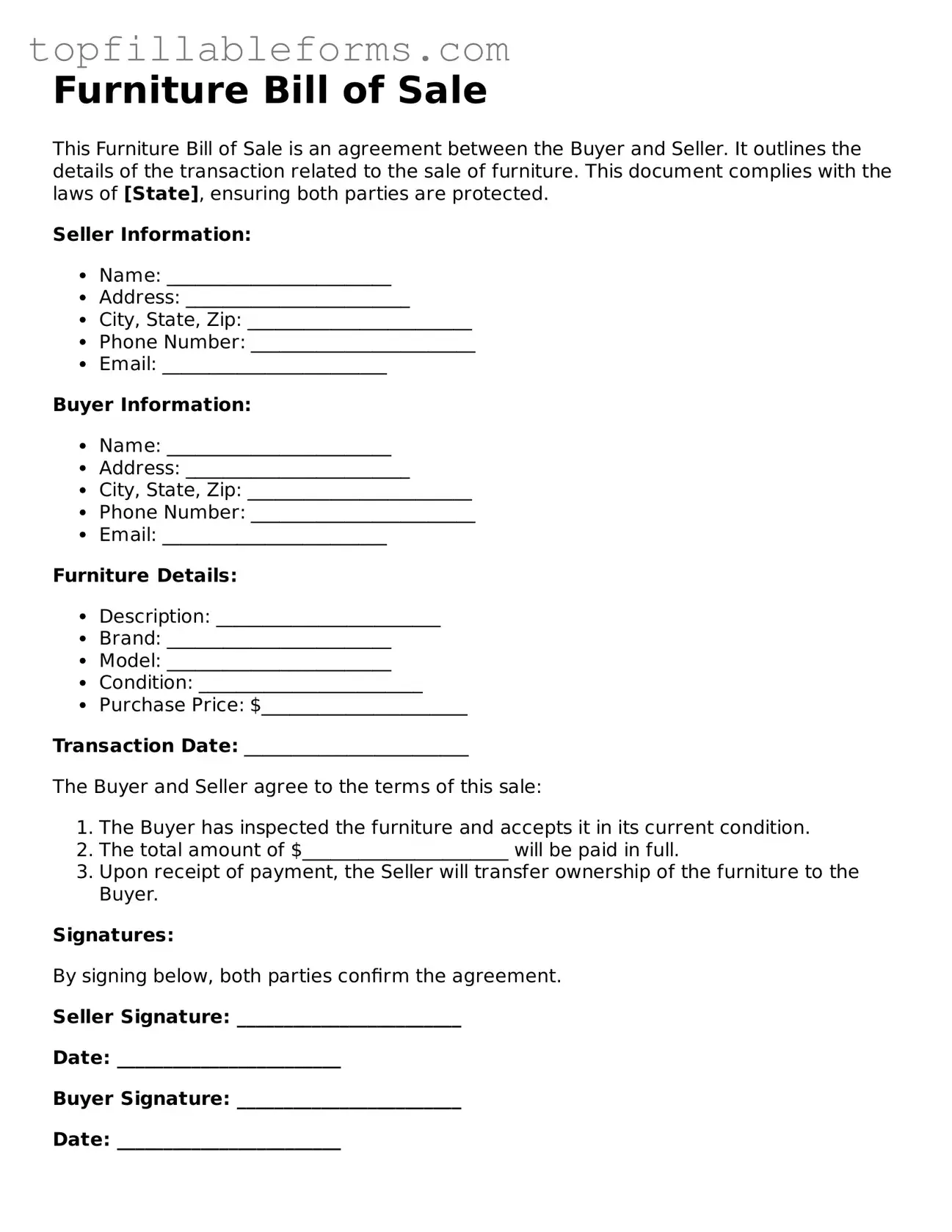Furniture Bill of Sale
This Furniture Bill of Sale is an agreement between the Buyer and Seller. It outlines the details of the transaction related to the sale of furniture. This document complies with the laws of [State], ensuring both parties are protected.
Seller Information:
- Name: ________________________
- Address: ________________________
- City, State, Zip: ________________________
- Phone Number: ________________________
- Email: ________________________
Buyer Information:
- Name: ________________________
- Address: ________________________
- City, State, Zip: ________________________
- Phone Number: ________________________
- Email: ________________________
Furniture Details:
- Description: ________________________
- Brand: ________________________
- Model: ________________________
- Condition: ________________________
- Purchase Price: $______________________
Transaction Date: ________________________
The Buyer and Seller agree to the terms of this sale:
- The Buyer has inspected the furniture and accepts it in its current condition.
- The total amount of $______________________ will be paid in full.
- Upon receipt of payment, the Seller will transfer ownership of the furniture to the Buyer.
Signatures:
By signing below, both parties confirm the agreement.
Seller Signature: ________________________
Date: ________________________
Buyer Signature: ________________________
Date: ________________________
